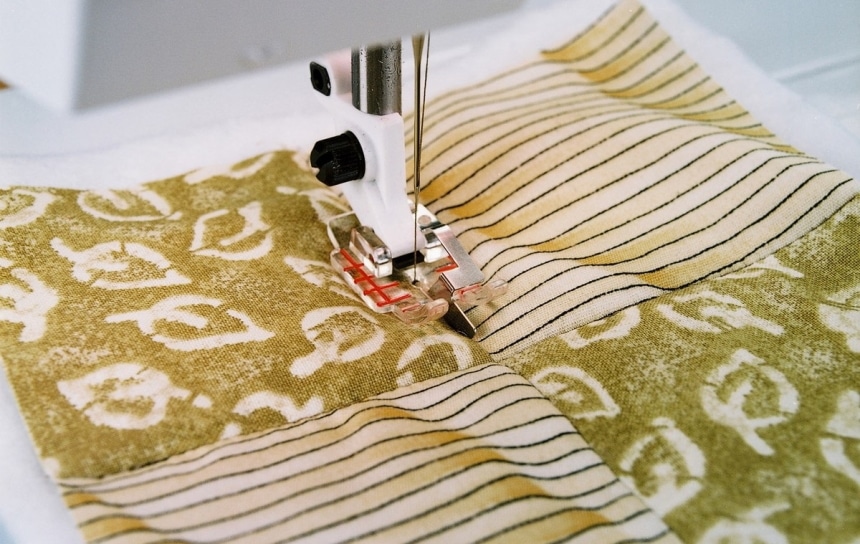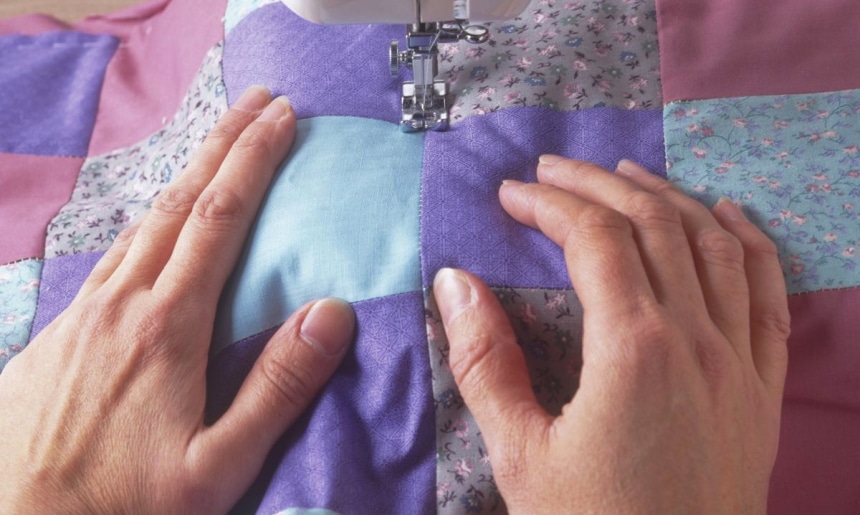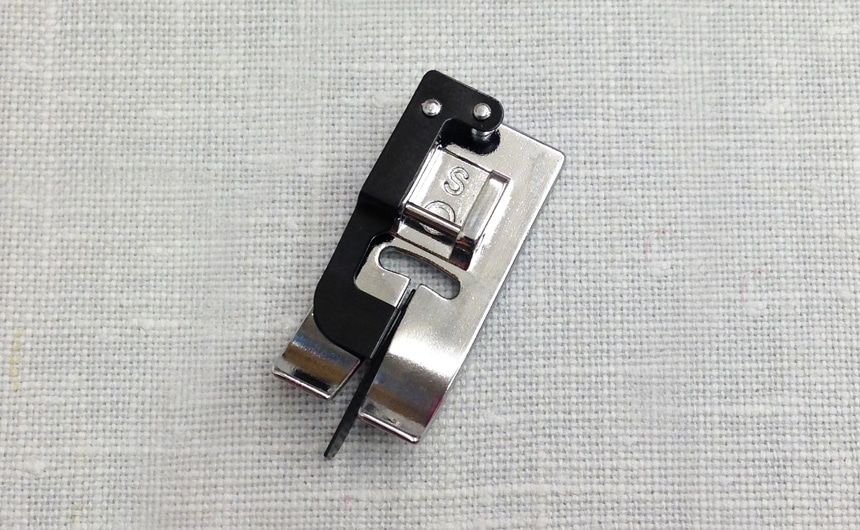

There are several ways to finish the edges of a garment, and one of them is the stitch in the ditch. This technique is universally used in sewing everyday garments and quilts. It is a popular method that can be accomplished in machine quilting while using a walking foot and is often referred to as an even feed foot.

Stitch in the ditch means that a quilter ensures they follow along the seam lines of their patchwork. Simply put, if doing a patchwork quilt made of square blocks, you will be required to stitch in the ditch-this means sewing along the seams joining the square blocks.
It is a technique that emphasizes on stitching through the crack of the stitch on the right-hand side of the fabric. By doing this, you also ensure that you get to secure the under-layer on the wrong side. Every time you employ the stitch in the ditch technique, you get to clean the finished edge on the inside of a garment. At the same time, you get to create an invisible stitch on the right side of the cloth.
Learning how to stitch in the ditch is easy, and this is why it’s popular among quilters and other sewers. It simply places stitches at a hair’s width away from the seams separating blocks of a quilt. It also comes in handy when the quilt blocks are sewn together as it amplifies the ditch while at the same time remaining inconspicuous. To get the perfect results, though, you will need to learn how to stitch in the ditch quilting.

Stitch in the ditch technique ensures the stitches go through the crack of the stitch on the right side of the fabric while ensuring the under-layer is secured on the wrong side. This is how to stitch in the ditch with a sewing machine:
The stitch in the ditch is not intended to be visible on the top of the quilt. However, these stitches, when nicely done, do add a much-valued depth. They do this by compressing the batting hence making them quite visible on the backing fabric of the quilt. All of the stitches in the ditch are intended to secure all three layers of the quilt. To make the best quilt using this technique, you will need to do some practice just like with every other quilting technique. Here is how to stitch in the ditch quilting:

Learning how to use Janome stitch in the ditch foot is important if you want to advance your quilting style and learn new techniques. As a renowned American sewing machine manufacturer, Janome has invested in high-quality and innovation to make each machine safe and reliable. Here are a few steps that you should follow to master this technique:
Stitching in the ditch is a popular technique used by quilters and other sewers to bring out the beauty of clothes. These stitches are not meant to be seen, but they are very instrumental at adding depth to a quilt of a piece of cloth. As a rule of the thumb, stitches in the ditch do secure the three layers of a quilt.
Quilting is diverse and unique in that if your patchwork was very large, you can add line stitches in different areas using your machine. It doesn’t have to be near the seams. You must also remember that there are no quilting vigilantes or police. You are free to have seams that are not geometrically straight or professionally interconnected. As a beginner quilter, strive to keep your stitches smooth. Every new quilt helps you learn a lot about consistency style and genuine love for quilting. You will be surprised at how many people will only see the beauty that your quilt exudes and nothing about the lack of smoothness of the stitches. Strive always to learn a new thing in quilting, and within no time, you will be making the perfect stitch in the ditch quilting maneuvers.